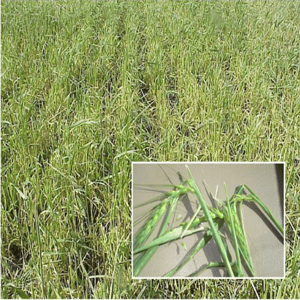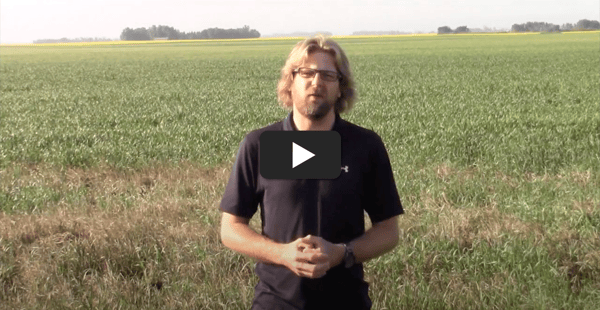Has your crop been impacted by hail? We can help.
Written on 06/16/2020
Is hail a risk to your crop? Let us show you how to protect it.
As we all know, a hail event will put the crop under significant physiological stress, damaging the plant, stunting its growth, and ultimately affecting yield.
Watch the video (less than 2 minutes) to learn:
- What happens inside the plant when it's been damaged by hail
- How plant nutrition and biostimulants can help the plant recover from hail damage
- Product options for helping your crop bounce back from hail damage
What Happens to the Plant During Hail?

Leaf Tissue Damage: During hail, the photosynthetic factory of the plant (the leaves) can be significantly affected. When the leaf tissue is damaged, the leaf's ability to take in sunlight to create photosynthesis is compromised and the plant experiences stress.
Repair Mode: Upon leaf tissue damage, the plant goes into "repair mode" and moves a large portion of its nutrients and various metabolites around the damaged sites to help fortify the healthy plant tissue.
Systemic Acquired Resistance (SAR): The plant is quite smart, as it will move various sugars, metabolites, and amino acids from the irreparable, damaged tissue, to the healthy part of the leaves. The goal here is to limit the amount of available "food sources" in the damaged tissue so that the various pathogens and insects can not easily proliferate. The natural defense system of the plant is known as Systemic Acquired Resistance (SAR).
In order for a plant to actively engage Repair Mode and Systemic Acquired Resistance, it must be healthy and have a healthy and active root system.
Proactively Deal with Hail Damage
The first step in dealing with hail damage is to assess if there is enough healthy "green" tissue to target and help fix the plant. If there is enough healthy plant tissue, timing becomes critical. The goal is to help the plant repair itself as quickly as possible.
At this point, there are three objectives that can be effectively handled with nutrition:
- Restarting Photosynthesis
- Driving Roots
- Driving Systemic Acquired Resistance (SAR)
If at this point the plant is deficient in nutrients, and if a foliar nutrient application is delayed, the plant can prematurely switch to the reproductive stage, rather than re- establishing its root system. The end result will be a significant reduction in yield as the plant will not be properly developed to move nutrients to the grain or pods for filling.
Making the Complex... Simple
At ATP Nutrition, our recommendation following hail damage is to apply as soon as you can get onto the field.
Apply ReLeaf Canola on all crop types at 2 L/Ac plus 0.5 L/Ac of Kinetic Boron.
This will accomplish the three objectives listed above:
- Restarting Photosynthesis: This is achieved through the proper balance of nutrients in each formulation.
- Driving Roots: This nutrient package has all of the critical nutrients to drive roots. ReLeaf is powered by the Transit-S™ technology and proprietary Biological Activators to help promote rooting.
- Driving Systemic Acquired Resistance (SAR): The addition of Boron not only helps with improving the integrity of the cell tissue, but also allows for proper movement of key metabolites to aid in the natural defense system of the plant.
To learn more about how to protect your crop from hail or any questions about how ReLeaf or Kinetic can help with hail damage, please contact us.




Leave a reply